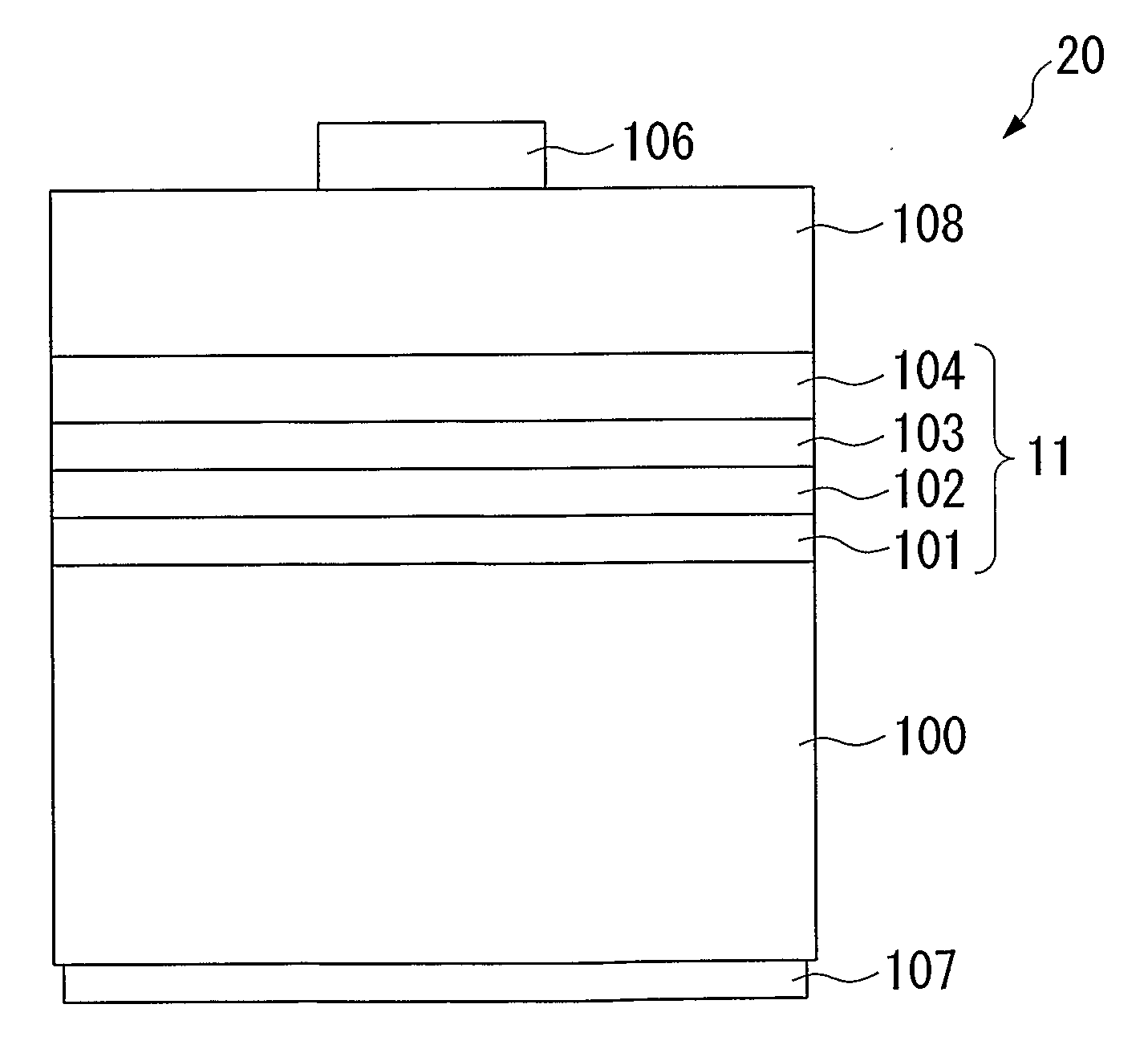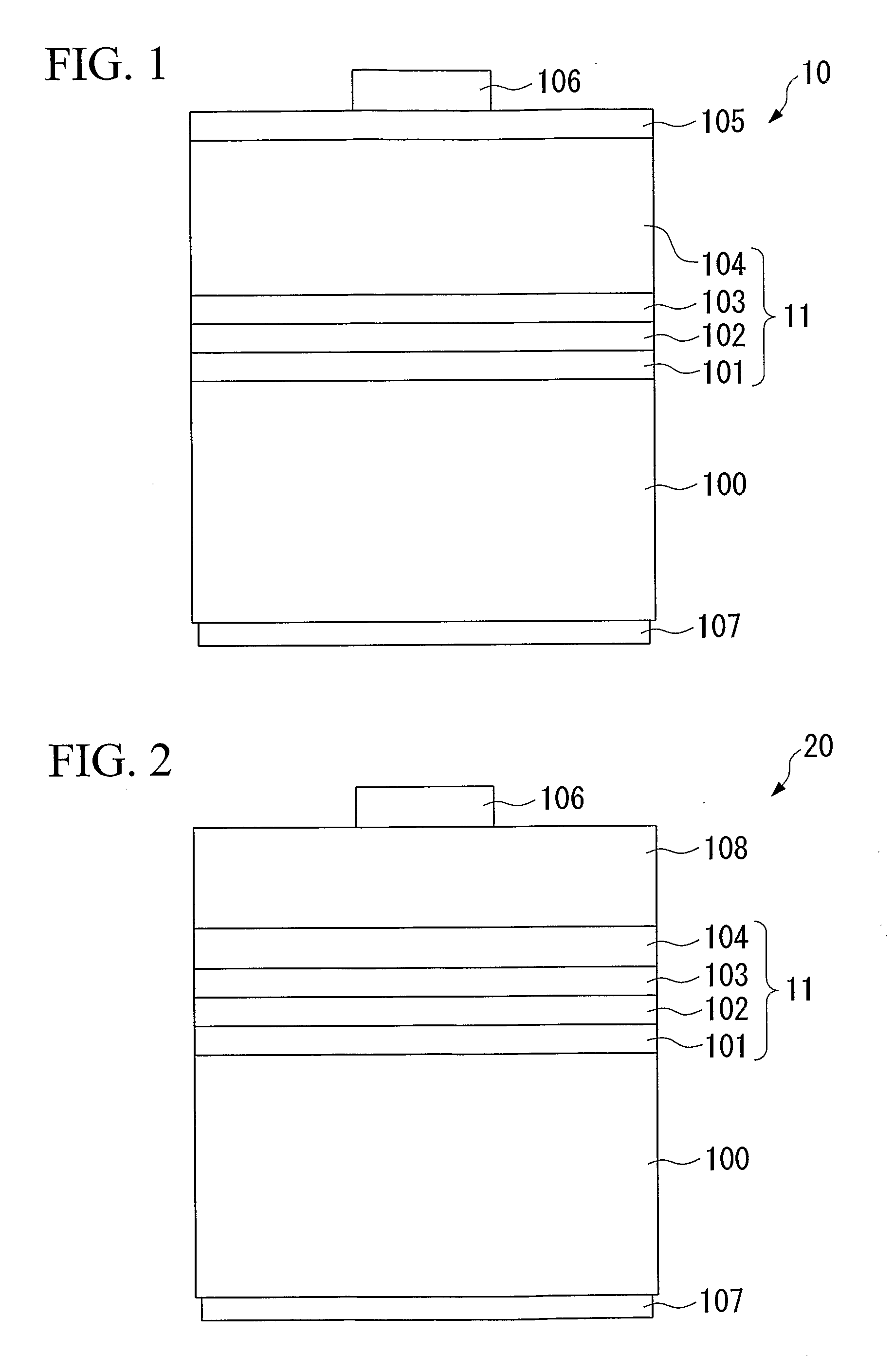Compound semiconductor light-emitting diode
- Summary
- Abstract
- Description
- Claims
- Application Information
AI Technical Summary
Benefits of technology
Problems solved by technology
Method used
Image
Examples
example 1
[0099] The present invention will next be described in detail with reference to an exemplary boron phosphide LED having a current diffusion layer composed of a boron monophosphide semiconductor.
[0100]FIG. 1 is a schematic cross-sectional view of a boron phosphide LED 10 of Example 1 having a double-hetero (DH) junction structure and a stacked structure 11 thereof. Since FIG. 1 is a schematic view, dimensions (e.g., thickness proportions) of the component layers may be different from the actual values.
[0101] The stacked structure 11 was formed through sequentially stacking on a zinc (Zn)-doped p-type (100)-gallium arsenide (GaAs) single-crystal substrate 100 the following layers: a zinc-doped p-type GaAs buffer layer 101, a lower cladding layer 102 composed of a zinc-doped aluminum gallium indium phosphide mixed crystal ((Al0.70Ga0.30)0.50In0.50P), an undoped n-type light-emitting layer 103 composed of (Al0.14Ga0.86)0.50In0.50P, and a selenium (Se)-doped n-type upper cladding layer...
example 2
[0120] The present invention will next be described in detail with reference to an exemplary boron phosphide semiconductor LED having a boron-phosphide-based semiconductor layer (composition-graded layer) having a boron compositional gradient, the layer serving as both a current diffusion layer and a cladding layer.
[0121]FIG. 2 is a schematic cross-sectional view of a boron phosphide LED 20 of Example 2. Similar to FIG. 1, since FIG. 2 is a schematic view, dimensions (e.g., thickness proportions) of the component layers may be different from the actual values.
[0122] The same members as employed in the boron phosphide LED 10 shown in FIG. 1 are denoted by the same reference numerals, and detailed description therefor is omitted.
[0123] In Example 2, a selenium (Se)-doped n-type upper cladding layer 104 employed in the boron phosphide LED 10 of Example 1 and composed of (Al0.70Ga0.30)0.50In0.50P was provided as a thin-film cladding layer (hereinafter the layer is also denoted by the...
PUM
 Login to View More
Login to View More Abstract
Description
Claims
Application Information
 Login to View More
Login to View More - R&D
- Intellectual Property
- Life Sciences
- Materials
- Tech Scout
- Unparalleled Data Quality
- Higher Quality Content
- 60% Fewer Hallucinations
Browse by: Latest US Patents, China's latest patents, Technical Efficacy Thesaurus, Application Domain, Technology Topic, Popular Technical Reports.
© 2025 PatSnap. All rights reserved.Legal|Privacy policy|Modern Slavery Act Transparency Statement|Sitemap|About US| Contact US: help@patsnap.com


